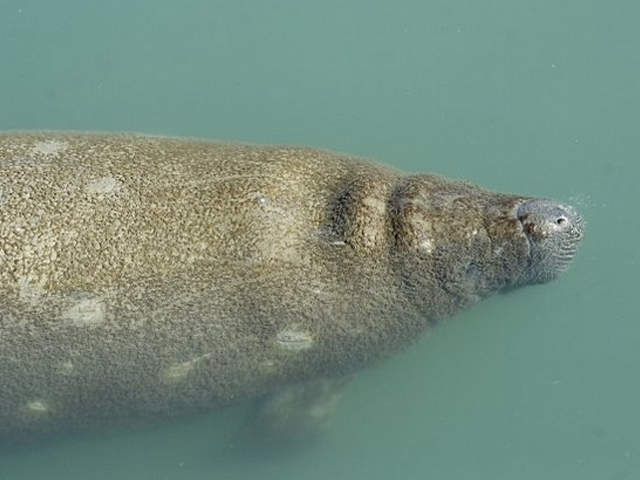
Since July and 2012, a total of 220 manatees have died in the lagoon in Brevard County, about 100 of them under mysterious circumstances; and since February, between 250 and 300 dead pelicans have been found in the same area.
Thomas R. "Tom" Reinert, a research administrator with the Florida Fish and Wildlife Conservation Commission, told members of the Indian River Lagoon National Estuary Program Advisory Board on Wednesday that researchers have been stumped in their efforts to find the cause - or causes.
Asked if the mysterious deaths could migrate south into the lagoon along the Treasure Coast, Reinert replied, "I can't answer that. The cases seem to be localized, with the zone in Brevard County from Sebastian to Titusville being where the deaths are concentrated. And it appears it will remain that way."
In March alone, Reinert said, 56 sea cows died from unknown causes in Brevard County, where the annual manatee death count from all causes averages 111.
Reinert said dead manatees have been reported "here and there" along the Treasure Coast, but the numbers are within the usual mortality rate.
According to the commission's website, six manatees have died in Indian River County, four in St. Lucie County and three in Martin County from Jan. 1 to April 19.
Statewide, 566 manatees have died over the same period. A record 766 manatees died in Florida in 2010.
"We're on a trajectory to eclipse that," Reinert said.
Reinert said the deaths of the manatees and the pelicans "could be completely unrelated. At least they're not directly related. They don't show the same symptoms at all. Of course, they could be tangentially related. There could be some ultimate cause that effects manatees and pelicans differently."
Reinert said the manatees that died mysteriously appeared to be healthy but drowned due to toxic shock-like symptoms similar to the hundreds of sea cows on Florida's West Coast that have died from toxins in the so-called "red tide" algae blooms.
"We've tested for (the toxin found in) red tide," Reinert said, "but there's no red tide present (in the lagoon manatees). There's no evidence of disease or viruses, or of any known toxins. We're not finding anything special that would explain the toxic shock."
The dead pelicans, on the other hand, have been emaciated and parasite-ridden.
"The parasites may be a coincident of the pelicans being sick and then getting the parasites rather than the parasites causing the sickness," Reinert said. "Whatever they had made them stop eating."
Necropsies of the dead pelicans didn't show signs of diseases such as avian flu or West Nile virus.
Researchers believe the manatee deaths are the result of a dietary shift, he added, "but that's not been confirmed."
Over the last few years, Reinert noted, the northern lagoon "has gotten hammered" by a series of algae blooms. The blooms have resulted in the loss of massive areas of seagrass, the manatees' primary food, while the amount of macroalgae, seaweed known as "the tumbleweeds of the Indian River Lagoon," has expanded.
Reinert said researchers initially focused on the fact that the first manatees to die mysteriously had lots of red macroalgae in their stomachs.
"But in the later deaths, we didn't find the same species of macroalgae," he said.
Whatever is killing manatees and pelicans, Reinert said, doesn't seem to pose a danger to humans.
"Well," he said, "I'm not testing anybody."



Reader Comments
to our Newsletter